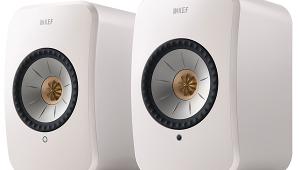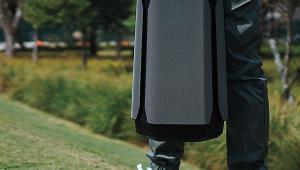Review: Libratone Zipp Wireless Speaker Page 2
Towering sound
I can’t recall when a product I was reviewing got me smiling so fast as the Zipp did. Something about the sound simply caught my ear and my soul. It reminded me of the way a great guitar amplifier just sounds right and all the other ones in the shop don’t.
Seconds into The Cult’s “Love Removal Machine” (from Electric), I had the Zipp cranked all the way up. OK, maybe that was pushing the tweeters just a tad, so I backed the volume down one notch on my iPod and never lowered it after that. The Zipp’s sound was so addictive I wanted it loud all the time, even when I was playing mellow stuff like James Taylor.
A lot of the Zipp’s appeal lies in its amazingly full sound. The bass plays amazingly deep for something not much bigger than a Quaker Oats can. Even one of my bass torture test cuts, the pipe-organ-heavy Michael Murray/San Francisco Orchestra recording of Joseph Jongen’s “Symphony Concertante,” sounded satisfyingly dynamic and full through the Zipp. I was happy to hear that Libratone didn’t design the Zipp the way many compact systems are designed, with a booming, high-Q bass bump that delivers strong bass only in a narrow band. The bass response sounded natural and even, the way it would with a well-designed bookshelf speaker.
Only the powerful, deep bass notes that lead off Holly Cole’s recording of “Train Song” (from Temptation) fazed the Zipp. It didn’t distort, but it compressed pretty heavily, and it just couldn’t provide enough output at such low frequencies to energize the room.
The Zipp also sounded big. While its driver layout prevents it from delivering any kind of separation, the omnidirectional array really fills a room. True to Libratone’s promise, the sound barely changes as you walk around the Zipp. You don’t even have to bother pointing it in any particular direction.
Was it perfect? No. Speakers with lots of little plastic bits in front of the drivers rarely, if ever, deliver smooth vocal reproduction. I heard a little extra mid-treble zip and a few subtle frequency response errors in some of Cole’s notes, as well as in the quasi-tribal wails of The Cult’s Ian Astbury and Led Zeppelin’s Robert Plant. Sometimes voices just sounded a little coarse, probably because I was pushing the Zipp’s tweeters up against their limits, causing them to distort slightly. In some complex arrangements, such as “Will O’ the Wisp” from Miles Davis’s Sketches of Spain, the Zipp just couldn’t flesh out the acoustics of the instruments the way a decent conventional speaker could.
Yet the Zipp’s occasional lack of refinement didn’t diminish my overall enjoyment of its sound, because all of the errors were limited to narrow frequency bands and didn’t shift the overall tonal balance. Even some fiendishly difficult-to-reproduce singers, such as jazz vocalist Susie Arioli and singer/songwriter Ron Sexsmith, sounded quite smooth through the Zipp.
- Log in or register to post comments






























































